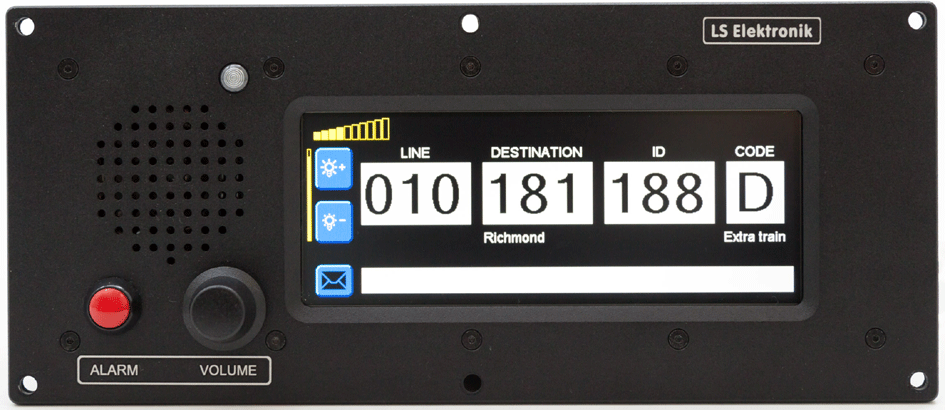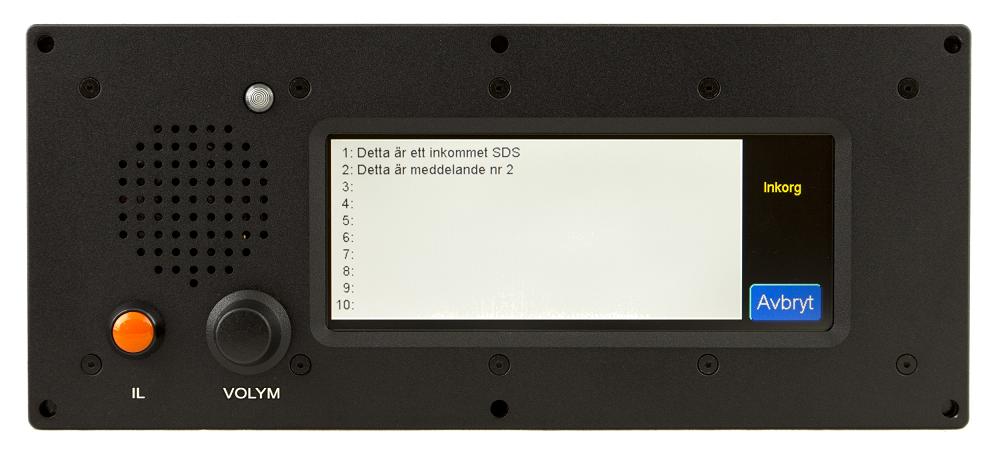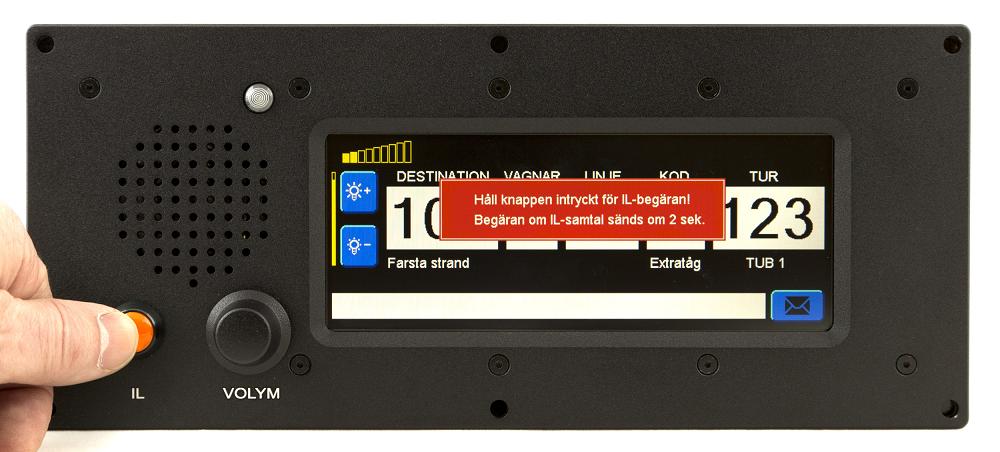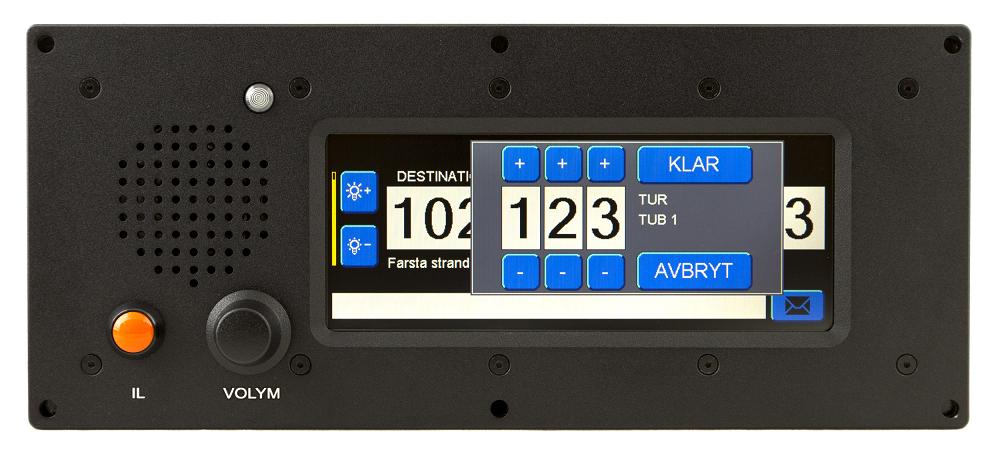MVP - Functions & Menus
Basic use
The basic use for the train driver is to set his Line, Destination, ID and Code before he starts his journey. At each end station this is reset to new values.
The panel communicates with the onboard train computer to set the destination signs on the train and to set the length of the train. The panel also communicates with the Tetra radio to set the talkgroup and to send in a log-on SDS to the Tetra systems alias server.
A touch on one of the numbers on the display brings forward the virtual thumbwheels so that the number can be set. A text guides the driver to do the right setting. For example the destination metro station names are all in the panels memory. In this way the driver doesn’t need the long paper lists that he used to have with the old panel.
Voice Calls
The normal call type is standard Talkgroup calls in the Tetra system. It is preferred that all trains hear all information.
Dispatchers can also send private calls to separate trains. With the help of an Alias server they do not need the trains ISSI-number, they can call the Line and Tour on the line.
In the Stockholm Metro version, trains can not set up private calls, only answer them.
Watch the film describing the basic functions
Basic menu
Other functions
Alarm Button
Pushing the alarm button on the panel will bring forward a red square on the screen telling that the driver needs to hold the button for two seconds to send an alarm.
The alarm is sent as an SDS in the Tetra system.
Microphone Paths
The microphones in the driver cabin are used both for radio calls and for PA calls in the train. The driver chooses path by pushing different PTT buttons. All audio is routed through the MVP.
Text Messages
The bottom white line will display text, this can be the ID of the radio on the talk group that is transmitting and it can be flash SDS:s that needs the drivers attention immediately. Flash SDS:s are marked with a red envelope.
Standard SDS messages will turn the envelope to yellow and the driver can, when he has the time for it, push the envelope and go to the “Read SDS menu”, that will show standard SDS:s.
The 10 last SDS:s are saved in the panel for as long as it is powered on. In this way old messages are deleted after each drivers shift.
Incoming messages is also indicated with a sound.
Passenger Information
There is a function in the panel that lets the dispatcher talk directly to the passengers in a train.
The function is started with sending an SDS message that the panel interprets. It then sets the speaker audio path to also include the trains PA system. The dispatcher can then talk to the train passengers.
After the message another SDS is sent to disconnect the PA system audio path.
This can be used for one train only, or for a group of trains.
The driver can disconnect the function at any time if he needs to use the radio.
Send Text
There is also a function in the panel to send preprogrammed SDS messages. But it is not activated in the Stockholm Metro.






